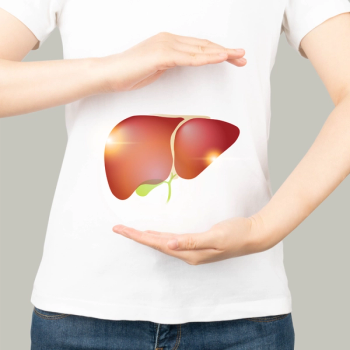Opdivo (nivolumab) plus chemotherapy demonstrated significant improvements in survival in patients with previously untreated advanced or metastatic gastric cancer, gastroesophageal junction cancer or esophageal adenocarcinoma when compared with chemotherapy treatment alone, according to a phase 3 trial.
Findings from the phase 3 CheckMate-649 trial were presented at the 2024 Gastrointestinal Cancers Symposium.
This randomized study included a total of 2,031 patients, 789 of whom were in the Opdivo plus chemotherapy arm and 792 of whom were in the chemotherapy alone arm.
The median age of patients enrolled in each arm was 62 and 61, respectively. Most of the population identified as male (68% versus 71%), had gastric cancer at initial diagnosis (70% versus 70%), had metastatic disease (96% versus 95%) and had an ECOG performance status of 1 (58% versus 57%), meaning patients were restricted in strenuous activities.
Patients with previously untreated, unresectable advanced or metastatic gastric cancer, gastroesophageal junction cancer or esophageal adenocarcinoma with no known HER2-positive status and an ECOG performance status of 0 or 1 were eligible to enroll in the trial.
Patients were grouped based on tumor cell PD-L1 expression, region, ECOG performance status and type of chemotherapy received.
- Opdivo with chemotherapy improves survival in GI cancers, compared to chemotherapy alone.
- Patients in the Opdivo-chemo group lived longer without disease worsening.
- Opdivo is the first treatment of its kind showing long-term benefits and safety over four years.
- Opdivo-chemo resulted in a positive response in 58% of patients, with manageable side effects.
- Although some side effects led to treatment discontinuation, the overall safety was considered acceptable for the survival benefits observed.
Results reflected survival improvements, specifically with overall survival (OS; time from diagnosis or start of treatment when a patient is still alive) and progression-free survival (PFS; time during and after treatment when patients live with disease but it does not worsen).
The median OS in the overall population was 13.7 months in the Opdivo-chemotherapy arm and 11.6 months in the chemotherapy-alone arm. The median PFS in the overall population was 7.7 months in the Opdivo-chemotherapy arm and 6.9 months in the chemotherapy-alone arm.
“(Opdivo) is the first PD-1 inhibitor plus chemotherapy combination to demonstrate long-term efficacy versus chemotherapy and acceptable safety after four years of follow-up in patients with previously untreated advanced (gastric cancer, gastroesophageal junction cancer, or esophageal adenocarcinoma),” Dr. Kohei Shitara, lead study author, said during the presentation.
Shitara is a medical oncologist and the chief of the department of gastrointestinal oncology of the National Cancer Center Hospital East in Kashiwa, Japan.
READ MORE: Adding Opdivo to Frontline Chemo Boosts Survival in Advanced GI Cancers
At the data cutoff, the minimum follow-up was 48.1 months. Three patients in the combination arm and nine in the chemotherapy arm were still receiving treatment at the cutoff.
The objective response rate (ORR; percentage of patients who had a partial or complete response to treatment) in the total population was 58% in the Opdivo-chemotherapy arm and 46% in the chemotherapy-alone arm, with most patients experiencing a partial response (47% versus 39%), as well as complete responses (11% versus 7%) and stable disease (28% versus 33%).
The median duration of response (DOR; time from start of study until disease progression or death in patients with a partial or complete response) in the overall population was 8.5 months and 6.9 months in each respective arm.
No new safety signals were reported, according to the study. Any grade treatment-related side effects occurred in 95% of patients in the Opdivo-chemotherapy arm and 89% of patients in the chemotherapy-alone arm.
Treatment-related side effects leading to discontinuation occurred in 42% and 26% of patients in each respective arm, with 19% and 10% in each arm resulting from severe to life-threatening treatment-related side effects.
The most common severe to life-threatening treatment-related side effects in the Opdivo-chemotherapy arm included neutropenia (lower levels of white blood cells; 16%), anemia (6%) and increased lipase (enzymes that break down fats in food; 6%).
In the chemotherapy-alone arm, the most common severe to life-threatening treatment-related side effects included neutropenia (13%), diarrhea (3%), peripheral neuropathy (numbness or pain in hands and feet; 3%), anemia (3%) and vomiting (3%). A total of 16 patients in the Opdivo-chemotherapy arm and four patients in the chemotherapy-alone arm experienced treatment-related deaths.
For more news on cancer updates, research and education, don’t forget to subscribe to CURE®’s newsletters here.





